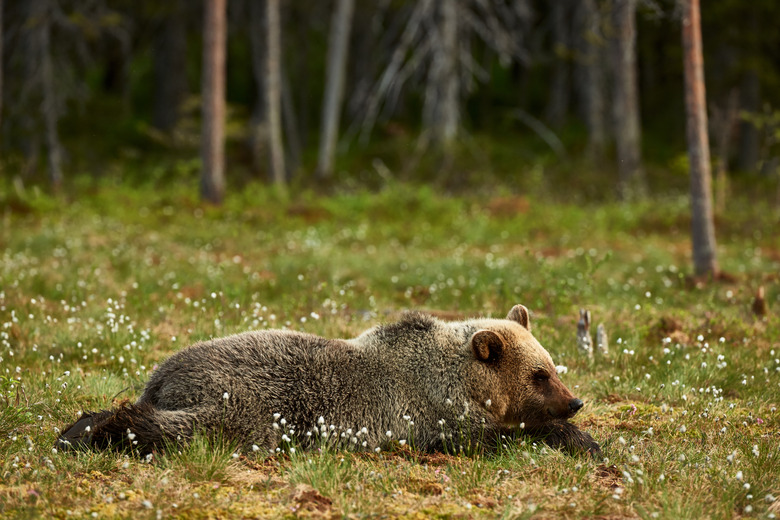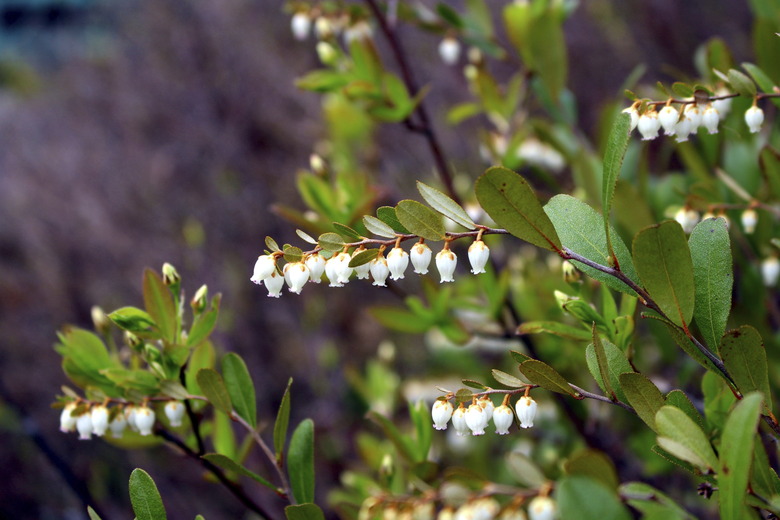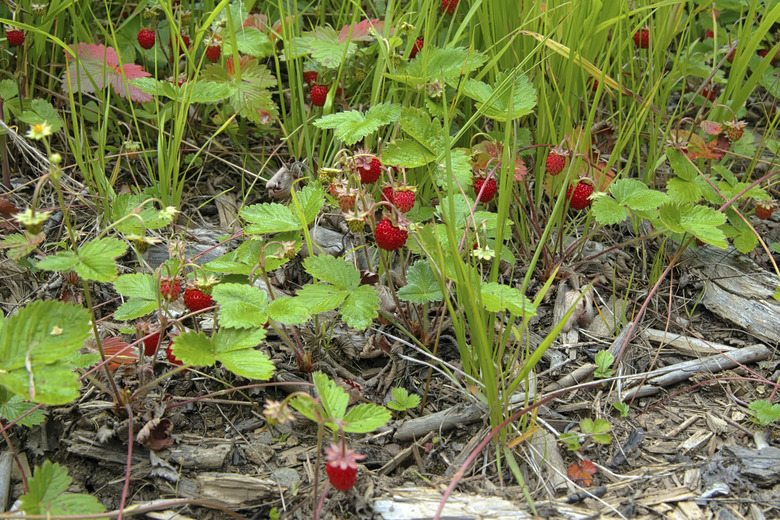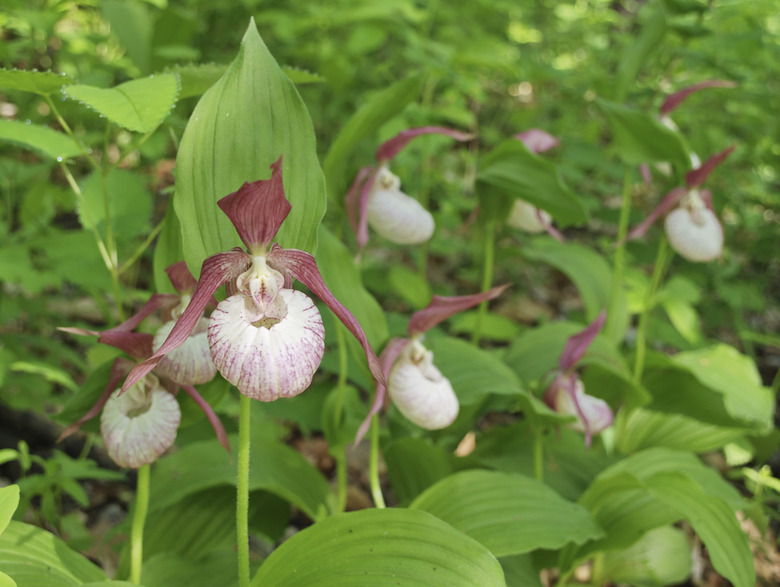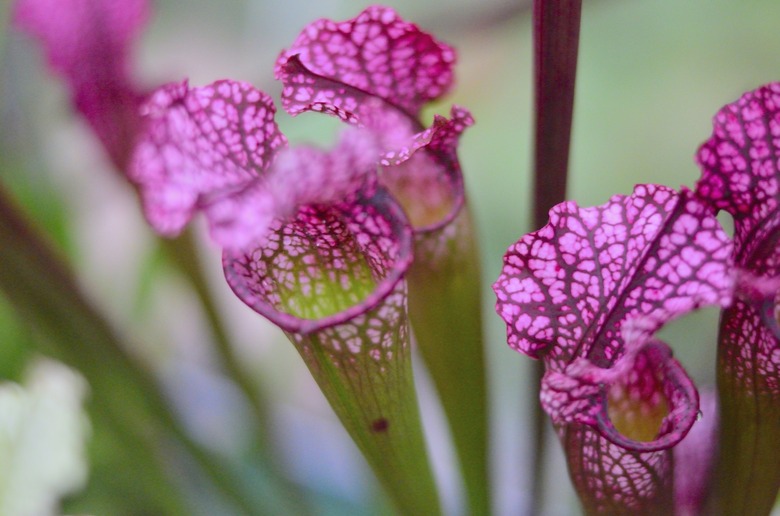What Are Some Flowers Found In The Taiga?
The taiga, or boreal forest, covers more land than any other biome on Earth. It stretches across much of Canada and Russia, and covers much of Alaska and Scandinavia. Known for cold temperatures and heavy snowfall, the taiga's most distinctive forms of are coniferous trees, such as larches, pines, and spruces. However, in addition to its forests, the taiga is home to many smaller flowering species, such as orchids and sundews.
Flowering Bulbs
Flowering Bulbs
Many of the taiga's most colorful and distinctive flowers grow from underground bulbs or rhizomes. The lily-of-the-valley, found in both Europe and the Americas, grows multiple small, white bell-shape flowers that hang down from the same stalk. Colorful cup-shaped crocuses and tulips can also be found in the biome, especially in the northern reaches of Russia. The blue bead lily, native to Canada, has small, nodding yellow flowers, which fruit into tiny blue berries.
Flowers and Berries
Flowers and Berries
Many of the flowering plants in the taiga region produce fruits, including some familiar species of berries. The wild strawberry, fragaria vesca, is found in the forests of the United States, Canada and Scandinavia. Fragaria vesca is a creeper that grows low to the ground, and produces small white blooms that fruit into small, hairy berries. The blackberry bush, which grows throughout Europe, Asia and the Americas, has white, rose-like flowers. The bunchberry, native to the American boreal forest, has a four-petaled white flower and edible, although bland, berries. The baneberry, which grows in the same region, has multiple white flowers on the same stalk, but produces poisonous berries.
Orchids
Orchids
Bogs are a common feature of the taiga — during summer, large amounts of snowmelt leave the ground damp. Marshes, wetlands and damp forest ground provide a perfect habitat for many species of orchids. Taiga orchids typically have smaller flowers than their tropical cousins, usually three to 12 small blooms that grow from the same stalk. Orchids come in a variety of colors. The white round-leafed orchid and the yellow-green blunt-leaved orchid grow in Canada, while the small white orchid, purple fragrant orchid, green false orchid and frog orchid grow in Scandinavia. One distinctively shaped orchid is Cypripedium acaule, often referred to as the pink lady's slipper because of its shoe-shaped flowers.
Carnivorous Flowers
Carnivorous Flowers
The soil in the taiga is acidic and nitrogen poor, so many species of plants must turn to other means to get the nutrients they need. Some plants have evolved to be carnivorous, eating animals to gain additional nutrients. Sarracenia purpurea, the purple pitcher plant, is found in the northern United States and throughout Canada, and has large, pitcher-shaped leaves; insects are trapped in these leaves and digested. The pitcher plant has large red or purple flowers that rise on stalks and droop down above the tops of the pitchers. Several species of sundew, genus Drosera, are found in the boreal forests of Europe and Canada. The sundew has sticky leaves which trap and enfold insects. Sundews grow low to the ground, and have small white or pink five-petaled flowers.
Cite This Article
MLA
Zamboni, Jon. "What Are Some Flowers Found In The Taiga?" sciencing.com, https://www.sciencing.com/flowers-found-taiga-6617304/. 24 April 2017.
APA
Zamboni, Jon. (2017, April 24). What Are Some Flowers Found In The Taiga?. sciencing.com. Retrieved from https://www.sciencing.com/flowers-found-taiga-6617304/
Chicago
Zamboni, Jon. What Are Some Flowers Found In The Taiga? last modified March 24, 2022. https://www.sciencing.com/flowers-found-taiga-6617304/
